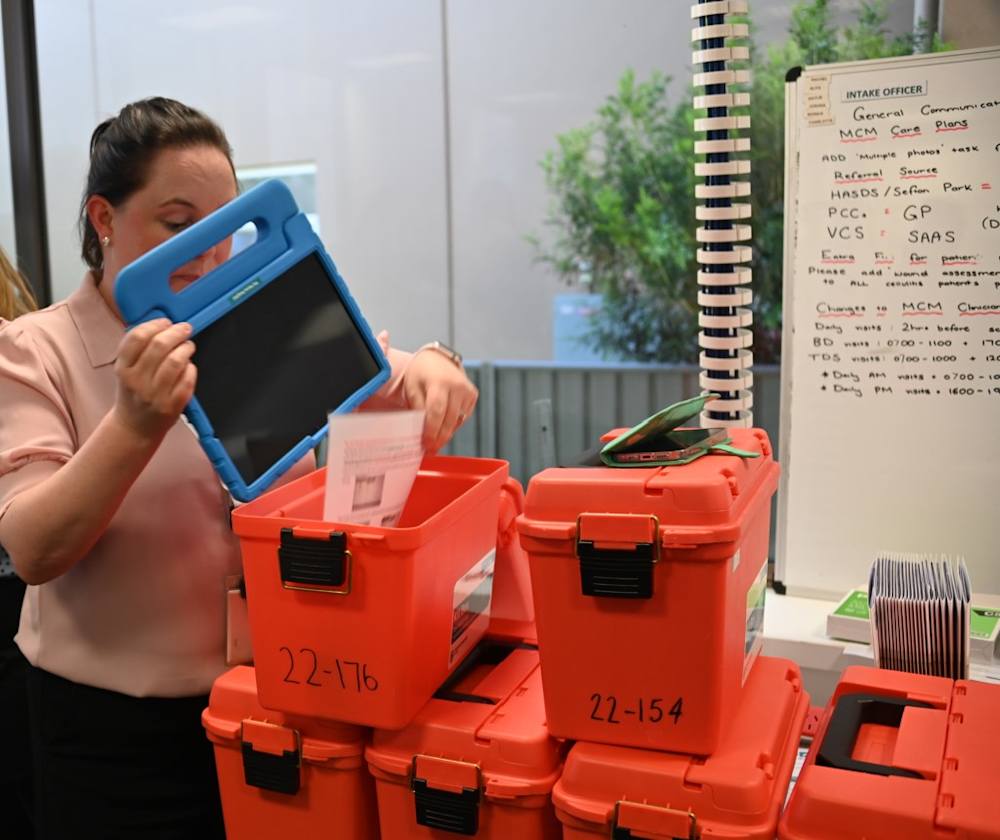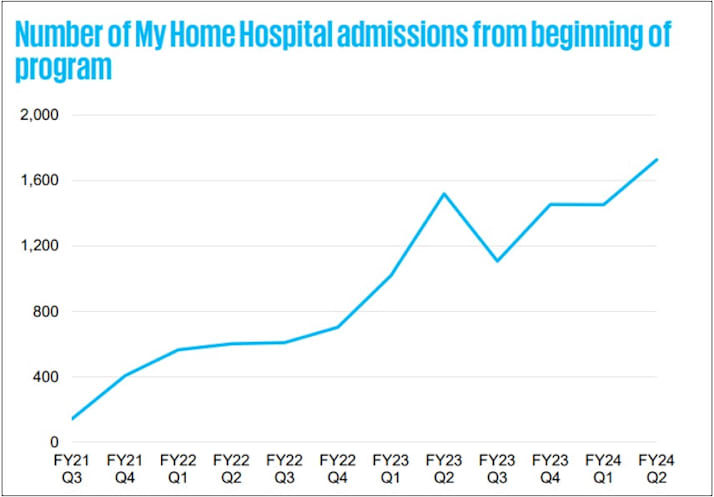While in Adelaide two weeks ago for the ACCPA National Conference, we took the opportunity to tour SA Health’s My Home Hospital service, which is delivered through a joint venture between Calvary Health Care and Amplar Health.
What we saw blew us away.
The service, which has been up-and-running for three years, has treated over 17,000 patients, including 2,500 aged care residents. It is a number that is set to grow with RNs in aged care homes in South Australia now able to directly refer residents to My Home Hospital.
How does it work?
The aged care nurse completes the intake with a virtual hospital medical officer, with nursing and allied health staff visiting the residents up to three times a day at their home to provide in-person treatment as well as virtual ward rounds and remote monitoring of patients.

Simple yet effective and a model that will be increasingly in demand.
With over 100,000 Australians now turning 80 every year, the pressure will be on hospitals and aged care.
But as we have reported, few new aged care and hospital beds are hitting the ground.
Home care will not fill the care gap either, with the wait list now at 78,000-strong and the average Package now delivering just 3.27 direct care hours a week according to StewartBrown.
Hospital in the Home vital to supporting village and aged care residents
The natural home for ageing Australians will be retirement villages. We expect 100,000 retirement homes will be ‘village beds’ within five years.
Operators will be marketing care and support and have an increased duty of care to their customers.
Any aged care provider will tell you that a hospital or ED visit for an older person is fraught with risk.
Having the right technology and Hospital in the Home services in place will be vital, not only for operators but to the system.
Up to 30% of conditions could be treated at home by 2030
This is now being backed by new research.
Two weeks ago, KPMG Australia issued a 52-page report, which was commissioned by Medibank, on the economic benefits of virtual hospitals in Australia.
The research found up to 30% of conditions can now potentially able to be treated at home, which could save 1.2 million bed days in traditional hospitals by 2030 as well as up to $1 billion in costs.
As we covered in our recent Hospital in the Home issue of SATURDAY, this is not just clinical care.
Amplar Health is focusing heavily on delivering preventative programs for people that can be funded out of a person’s Home Care Package, private health insurance, through their GP and Medicare, or self-funded, with the aim of growing its customers in this space to 50,000 by FY25.
This is a big investment – and big money and growth opportunities for village and aged care operators.
Check out Medibank’s video about the report here and download the KPMG report here.










